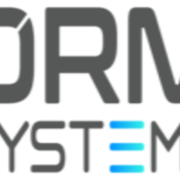
In today’s fast-paced digital landscape, software development teams are under constant pressure to deliver high-quality applications at an unprecedented speed. As the complexity of software systems continues to grow, traditional manual testing methods are becoming increasingly inadequate to keep up with the demands of modern development cycles. This is where low-code automation testing tools come into play, offering a game-changing solution that bridges the gap between speed and quality in software testing.
Understanding Low-Code Automation Testing
Low-code automation testing tools represent a paradigm shift in the way quality assurance (QA) teams approach software testing. These innovative platforms allow testers to create, manage, and execute automated tests with minimal coding knowledge, democratizing the testing process and enabling faster, more efficient quality assurance practices
Key Features of Low-Code Automation Testing Tools
- Visual Test Creation: Low-code platforms typically offer intuitive drag-and-drop interfaces that allow testers to visually design test cases without writing extensive code
- Reusable Components: These tools often include libraries of pre-built test components that can be easily customized and reused across different projects, significantly reducing the time required to create new test suites
- Cross-Platform Compatibility: Many low-code testing tools support multiple platforms and technologies, enabling teams to create tests that work across web, mobile, and desktop applications
- Integration Capabilities: Low-code testing platforms often integrate seamlessly with popular development tools, CI/CD pipelines, and project management systems, facilitating a smooth workflow
- AI-Powered Features: Some advanced low-code testing tools incorporate artificial intelligence to enhance test creation, execution, and maintenance processes
The Benefits of Adopting Low-Code Automation Testing
Accelerated Test Creation and Execution
One of the most significant advantages of low-code automation testing tools is the dramatic reduction in the time required to create and execute test cases. By eliminating the need for extensive coding, these platforms enable QA teams to rapidly develop comprehensive test suites that cover a wide range of scenarios
Improved Collaboration Between Testers and Developers
Low-code testing tools bridge the gap between technical and non-technical team members, fostering better collaboration between testers, developers, and business stakeholders. This improved communication leads to more effective testing strategies and faster issue resolution
Enhanced Test Coverage and Accuracy
With the ability to quickly create and execute many test cases, low-code automation testing tools help teams achieve broader test coverage. This comprehensive approach to testing results in higher-quality software products with fewer defects reaching production
Reduced Maintenance Overhead
Traditional automated tests often require significant maintenance as applications evolve. Low-code testing tools typically offer features that simplify test maintenance, such as self-healing capabilities and easy-to-update visual interfaces, reducing the long-term costs associated with test automation
Empowering Non-Technical Team Members
By lowering the barrier to entry for test automation, low-code tools empower non-technical team members to contribute to the testing process. This democratization of testing allows organizations to leverage the domain expertise of business analysts and subject matter experts in creating more relevant and comprehensive test scenarios
Best Practices for Implementing Low-Code Automation Testing
- Start with a Clear Testing Strategy
Before diving into low-code automation testing, it’s crucial to develop a clear testing strategy that aligns with your organization’s goals and development processes. Identify the types of tests that will benefit most from automation and prioritize accordingly
- Invest in Training and Skill Development
While low-code tools reduce the need for extensive coding knowledge, it’s still important to invest in training for your QA team. Ensure that testers are familiar with testing best practices, test design principles, and the specific features of your chosen low-code platform
- Maintain a Balance Between Low-Code and Traditional Coding
While low-code tools offer significant advantages, it’s important to recognize that some complex testing scenarios may still require traditional coding approaches. Maintain a balance between low-code and traditional testing methods to ensure comprehensive coverage
- Emphasize Reusability and Modularity
Take advantage of the reusable components and modular design capabilities offered by low-code testing tools. Create a library of reusable test elements that can be easily shared across projects and teams, improving efficiency and consistency
- Integrate with Existing DevOps Processes
To maximize the benefits of low-code automation testing, integrate your chosen tool with your existing DevOps processes and tools. This integration ensures that automated tests become an integral part of your continuous integration and delivery pipeline
Overcoming Challenges in Low-Code Automation Testing
Addressing Scalability Concerns
As test suites grow and become more complex, it’s important to ensure that your low-code testing solution can scale accordingly. Look for platforms that offer robust performance optimization features and support for parallel test execution
Managing Test Data Effectively
Effective test data management is crucial for successful automation testing. Implement strategies for generating, maintaining, and versioning test data to ensure consistent and reliable test results
Ensuring Test Maintainability
While low-code tools simplify test creation, it’s still important to follow best practices for test design and organization. Implement a clear structure for your test suites and leverage features like version control to manage changes effectively
The Future of Low-Code Automation Testing
As low-code automation testing tools continue to evolve, we can expect to see several exciting developments soon:
- Increased AI Integration: Artificial intelligence will play an even greater role in test creation, execution, and maintenance, further streamlining the testing process
- Enhanced Natural Language Processing: Future low-code tools may allow testers to create test cases using natural language, making the testing process even more accessible to non-technical users
- Improved Visual Testing Capabilities: As applications become more visually complex, low-code tools will likely offer more advanced visual testing features to ensure UI consistency and accessibility
- Greater Support for Emerging Technologies: Low-code testing platforms will continue to adapt to support testing for emerging technologies such as IoT devices, augmented reality, and blockchain applications
Conclusion: Embracing the Low-Code Testing Revolution
Low-code automation testing tools represent a significant leap forward in the field of software quality assurance. By empowering teams to create, execute, and maintain automated tests with minimal coding knowledge, these platforms are helping organizations deliver higher-quality software at an unprecedented pace. As the software development landscape continues to evolve, embracing low-code automation testing will become increasingly crucial for organizations looking to stay competitive. By adopting these innovative tools and following best practices for implementation, development teams can significantly enhance their testing processes, improve collaboration, and ultimately deliver better software products to their users. The future of software testing is here, and it’s low code. Are you ready to join the revolution?
Read tech and science related articles by visiting this website











